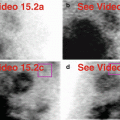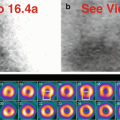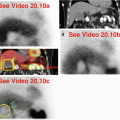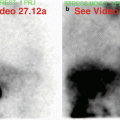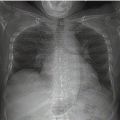and Vincent L. Sorrell2
(1)
Division of Nuclear Medicine and Molecular Imaging Department of Radiology, University of Kentucky, Lexington, Kentucky, USA
(2)
Division of Cardiovascular Medicine Department of Internal Medicine Gill Heart Institute, University of Kentucky, Lexington, Kentucky, USA
Electronic supplementary material
The online version of this chapter (doi: 10.1007/978-3-319-25436-4_21) contains supplementary material, which is available to authorized users.
The differential diagnosis of conditions affecting the spleen is limited (Table 21.1). The spleen is typically faintly visualized (Shih et al. 2002). The most common diffuse finding is splenomegaly, usually in association with hepatomegaly or cirrhosis (Chamarthy and Travin 2010; Joy et al. 2007; Shih et al. 2005; Tallaj et al. 2000). Splenomegaly can displace the left kidney (Shih et al. 2002). The incidence of patients with splenomegaly varies considerably with the patient population evaluated. For example, liver transplantation programs have a much higher likelihood of splenomegaly than community practices. Focal splenic lesions can be seen if sufficiently large. Figures 21.1, 21.2, and 21.3 show three different patients with splenomegaly in association with underlying liver disease.


Table 21.1
Differential diagnosis of “hot” and “cold” imaging findings related to the spleen
Organ system | “Hot” finding | “Cold” finding | References |
|---|---|---|---|
Spleen | Splenomegaly | Cyst Infarct | Chamarthy and Travin (2010) Joy et al. (2007) Shih et al. (2002) Shih et al. (2005) Tallaj et al. (2000) |


Fig. 21.1




Splenomegaly. This 48-year-old male has NASH (nonalcoholic steatohepatitis) and marked splenomegaly (a–d). Although photopenic regions appear to surround the small intestine mimicking ascites, there is not significant ascites by contemporaneous CT scan; there is only minimal perihepatic ascites (d). This point underscores the value of correlation during MPI interpretation. Note how an enlarged spleen, which lies immediately below the left hemidiaphragm, can overlie the inferior wall during MPI (e); this can potentially create a processing artifact. The left kidney is well seen and displaced by the large spleen (f). The gallbladder is visualized (a–c).(a) Rest raw projection images (Video 21.1a, frame 1),99mTc sestamibi. (b) Stress raw projection images (Video 21.1b, frame 1),99mTc sestamibi. (c) Stress raw projection image (Video 21.1c, frame 30, LAO),99mTc sestamibi, long-axis of spleen (yellow line), gallbladder (pink circle). (d) Coronal CT scan through spleen, long-axis of spleen (yellow line), perihepatic fluid (green lines), gallbladder (pink circle). (e) Stress raw projection image (Video 21.1c, frame 41),99mTc sestamibi, top of spleen (yellow arc), level of inferior myocardial wall (red line). (f) Stress raw projection image (Video 21.1c, frame 58, left lateral projection),99mTc sestamibi, left kidney length and width (blue lines), center of enlarged spleen for reference (yellow circle)
Stay updated, free articles. Join our Telegram channel

Full access? Get Clinical Tree




